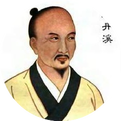
Exterior and Interior Syndrome Differentiation
The differentiation of exterior and interior refers to a method of identifying the location of the disease, whether it is internal or external, and the severity and depth of the condition.
Exterior and interior are relative concepts. Generally speaking, the skin, muscles, and meridians are considered the exterior, and diseases affecting these are classified as exterior syndromes; the organs and marrow are considered the interior, and diseases affecting these are classified as interior syndromes. However, in terms of the organs, the zang (organs) belong to the interior, while the fu (bowels) belong to the exterior; in terms of meridians, the three yang meridians belong to the exterior, while the three yin meridians belong to the interior. Pathogens of external diseases invade through the skin or respiratory tract, developing from the exterior to the interior, and from superficial to deep. Therefore, pathogens located in the exterior are superficial and mild, while those in the interior have penetrated deeply, indicating a severe condition and a longer course of illness. When exterior pathogens penetrate to the interior, the disease progresses; when interior pathogens exit to the exterior, the disease retreats. The deeper the pathogen enters the interior, the more severe the condition becomes; conversely, the more it exits the exterior, the milder the condition becomes.
By mastering the exterior and interior aspects of a disease, one can grasp its severity, depth, and pathological changes, thus gaining the initiative in treatment and taking appropriate measures. The key points in differentiating between exterior and interior syndromes mainly involve examining whether the symptoms of cold and heat are balanced, the extent of changes in the tongue coating, and the characteristics of the pulse.
This method is applicable to the differentiation of external diseases, particularly important for the differentiation of the six channels in typhoid fever and the differentiation of the wei, qi, ying, and xue in warm diseases.
What is an Exterior Syndrome??
The differentiation of exterior syndrome refers to a method of identifying the symptoms presented when external pathogens, such as the six excesses (liuyin) or epidemic toxins, invade the body through the skin and respiratory tract.
The etiology of exterior syndrome is external pathogens invading during an illness, with the disease located in the skin and muscles. The pathological change involves external pathogens invading through a weakness, leading to a struggle between the righteous and the evil, resulting in lung wei (defensive qi) imbalance. Diagnostic criteria include: primary symptoms manifesting as fever and chills (or aversion to wind), and pain in the head and body. Secondary symptoms include nasal congestion, runny nose, cough, and sore throat. The tongue coating is thin and white, and the pulse is floating. Key points for differentiation: one must have one of the primary symptoms along with typical tongue and pulse characteristics, or one of the secondary symptoms along with typical tongue and pulse characteristics. It is characterized by a sudden onset, short course, and superficial, mild nature of the disease.
This method is commonly used for the differentiation of external diseases in the early stages and should be distinguished from interior syndromes.
What is an Interior Syndrome??
The differentiation of interior syndrome refers to a method of identifying the symptoms presented when the disease is located deeply within the organs, qi, blood, or marrow.
Interior syndrome is contrasted with exterior syndrome; all symptoms that are not classified as exterior syndrome belong to interior syndrome. The causes of interior syndrome are complex: either the exterior pathogens have not been resolved and have invaded the organs, or external pathogens directly invade the organs, or factors such as emotions, diet, overwork, or sexual activity directly damage the organs. The etiology is complex, the location is broad, and the symptoms are numerous, often presenting in forms of either cold, heat, deficiency, or excess.
Diagnostic criteria include: symptoms manifesting as either heat without cold or cold without heat, or no cold or heat, with strong heat or mild heat, irritability, thirst, or aversion to cold with cold limbs, fatigue, a pale tongue with excessive saliva, constipation, or diarrhea with clear, long urine, abdominal pain, and vomiting, accompanied by symptoms of dysfunction in the affected organs. The tongue coating is yellow or thick and greasy, and the pulse is deep. Key points for differentiation: there must be a deep pulse along with the aforementioned two symptoms and symptoms of organ dysfunction. It is characterized by deep location, more severe condition, and longer course of illness.
This method is commonly used for the differentiation of external diseases in the mid to late stages or for internal injuries, and should be distinguished from exterior syndromes.
What is a Half Exterior Half Interior Syndrome??
The differentiation of half exterior half interior syndrome refers to a method of identifying symptoms when external pathogens have transmitted from the exterior to the interior but have not yet fully reached the interior, or when interior syndromes have emerged from the exterior but have not fully manifested, with the righteous and evil clashing between the exterior and interior.
Half exterior half interior syndrome is a pathological summary of diseases characterized by alternating cold and heat (or cold and heat like malaria), and fullness in the chest and flanks. Diagnostic criteria include: primary symptoms manifesting as alternating cold and heat, and fullness in the chest and flanks. Secondary symptoms include irritability, nausea, aversion to food, bitter taste in the mouth, and dizziness. The tongue is pale with a thin white coating, and the pulse is wiry. Key points for differentiation: one must have one primary symptom and three secondary symptoms along with typical tongue and pulse characteristics.
This method can be used for the differentiation of various diseases, as detailed in the differentiation of the six channels regarding shaoyang disease. It should be distinguished from exterior and interior syndromes.

This public account regularly shares knowledge about Traditional Chinese Medicine, and you are welcome to scan the code to follow!
This article references “Essence of TCM Diagnostic Methods” edited by Wang Mianzhi and authored by Zhang Dengben, published by World Graphic Publishing Company.


